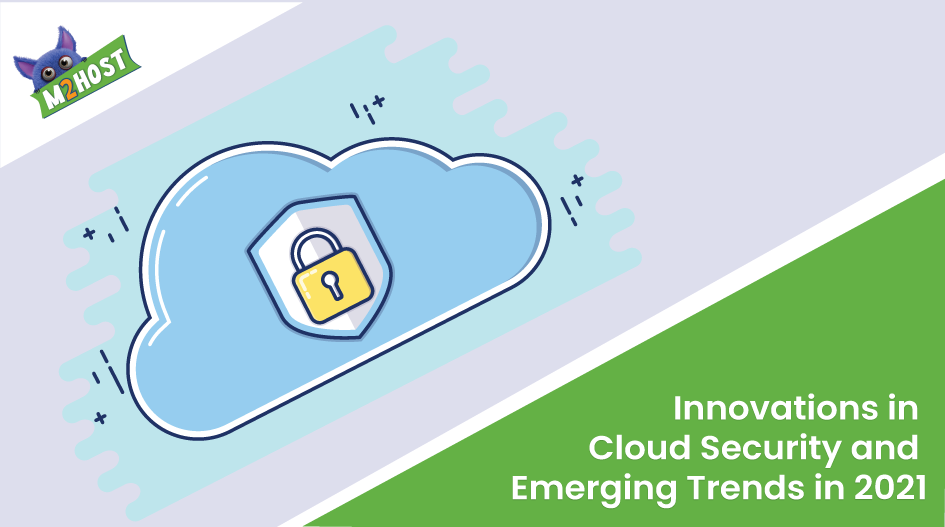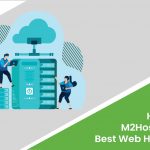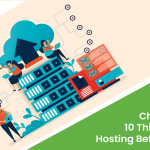Considerations regarding the safety of data storage are increasing in formation with the expansion of cloud computing as a service. Because of the risk of hackers accessing personal data & individual specifics, some people choose not to store sensitive data online although this could be a legitimate worry. The provision of web providers adheres to moral standards, & the businesses that manage this assistance do their utmost to offer customers the most protected services for all their clients. Data safety suppliers have been continuously working on innovative alternatives to allow the highest possible level of safety for their clients. Because hackings proceed to make news stories and safety violations continue to be a source of controversy.

At this time, there are a significant number of businesses and organizations who are migrating their data to the cloud. As a result, there is a growing demand for definite innovative strategies to preemptively optimum bundles & adaptable cloud-network infrastructure. 2021 is already experiencing just about a few fresh data protection patterns, most of which are probably to alter the way we look at corporate safety in the coming years. These tendencies have emerged to fulfill all of these requirements.
The following provides a look at some of the starting to emerge trends & inventions in cloud safety, as well as how these developments have the potential to alter how we view enterprise safety.
The ZNTA [Zero trust Network Access]
Over the previous few decades, consistently been generating a blast around the world of cloud computing. ZTNA is a modern innovation that is respected for its responsibility in the method for accomplishing a real zero security framework. This is due to the changing objectives of institutions & companies, as well as their embrace of zero trusts.
What is ZNTA
ZTNA is a collection of advances in technology that are based on a responsive semi-trusted and operate in conjunction with another. When using ZTNA, which is also known as the Software Defined Perimeter, confidence is neither implicit nor explicit, and connectivity is only given according to a least advantaged premise and discrete initiatives based on “have to understand.” ZTNA gives its customers safe & effortless interconnection for all of their personal apps without requiring them to expose those requests to the open system or to host those requests on the ZTNA system itself.
ZTNA’s method of safeguarding direct exposure to users’ inner applications is profoundly distinct from that of FWs and VPNs, both of that are internet backbone alternatives. ZTNA’s strategy is founded on the following four key principles:
Using ZTNA eliminates any possibility of awarding applications full rights to the system
This not only protects the system from potential threats but also ensures that only approved consumers will have entry to it. It thus eliminates any possibility of pathogens caused by gadgets that have been compromised.
With ZTNA, only one type of link which is permitted is an outgoing one
This ensures that the system & the software data centers are hidden from the view of users who are not approved to access them. Because the IP addresses have been covered up & never made public just on the web, this creates a “blockchain,” which creates it extremely difficult, if not unthinkable, to track down.
When an authorization implementation is obtained with ZTNA’s native application fragmentation
It is guaranteed that approvals are granted based on one-to-one variables. This is made possible by ZTNA’s native software edge detection. Only such implementations, & not the core system as a whole, will be accessible to customers with approved connectivity.
When a user employs ZTNA, the only security strategy available is a consumer strategy rather than a networking system
The system is neglected, & the site is turned into an innovative company system. This ensures that end-to-end encryption is provided by the TLS version rather than Multicast.
Server less computing
It is the method that delivers database assistance on a pay-per-use basis, despite the fact that systems are still in use. You receive all backend assistance from a seller that is server software, and you are charged predicated on utilization rather than a corrected quantity predicated on the multitude of data centers or any corrected quantity of channel capacity. In addition, you are paid on how much data is transferred.
You are able to implement software & write without having to worry about establishing system integration when you use a virtualized supplier. When you purchase backend infrastructure from such resellers, you are determined based on your calculation, & there is no need for any booking or being confronted with a stationary number of data centers or bandwidth because the provider is completely auto-scaling. In addition, you are billed based on your calculation. Despite the fact that it is referred to as “server less,” real systems are still being utilized; however, the designers are not required to be aware of this fact.
In the past, if you wanted to create an internet implementation, you were required to be in possession of physical apparatus in order to run the server. This was not only prohibitively costly but also time-consuming and inconvenient.
It wasn’t until after the advancement of cloud computing that a predetermined quantity of spaces in data centers was made available for sale. Companies & designers rented such fixed database components, which were typically over-purchased, to ensure that in the event of a sharp increase in action or traffic, it will remain within the month-to-month boundaries & would then not tear their applications. This was accomplished by ensuring that the components could handle a higher capacity than was initially acquired. This means that the majority of the database spaces which was already paid for.
The problems have been appropriately discussed by the emergence of auto-scaling designs. However, even with auto-scaling, whatever undesired antagonism in the actions, such as Assaults, becomes extremely costly.
The following are some of the advantages of using virtualized hosting
When equated to conventional cloud suppliers, which are utilized to arise in currently paying unnecessary for inactive processor time or unutilized area, lower priced expenses are “strongly and offer a significant cost savings advantage.
Streamlined Flexibility
When you use virtualized structure, you do not need to be concerned about initiatives that scale up the rules. This makes adaptability much simpler. The scalability & meeting of on-demand needs is entirely the responsibility of the virtualized seller.
Simple scripting on the server side
With cloud computing, designers have had the ability to create simplified features that act autonomously for a single purpose, such as System calls.
Great result
Since it is simple for designers to adjust software on a gradual basis, they do not need to apply complex procedures in order to fix bugs or add innovative characteristics. This allows for a quick comeback.
Confidential computing
This is centered on protecting the information which is being used, and is one of the biggest inventions in the modern age of cloud information technology and the arising sector. Its primary goal is to protect the data that is currently being used. The purpose of doing this is to make it possible for encoded information to be absorbed in the recollection, which will, in turn, reduce the likelihood that the data will be revealed to the remainder of the scheme. Because of this, less delicate data will be revealed, & consumers will have a greater extent of clarity & regulation over the process.
These times, companies & institutions of all sizes require greater concentrations of safety & regulation, which are able to defend their sensitive information & intellectual property no matter where it is stored. The gap can be avoided with virtual private computing, which improves data safety & guarantees the highest possible level of cloud security.
You would be capable of running your highly classified company caseloads over the cloud by using highly classified computer technology, & users would then be able to do so without the risks of malware logins. Additionally, you will be able to build pass data applications from different groups with higher resolution cloud online privacy.
Why will indeed you require computing that is private?
The use of confidential computing offers a great number of benefits to institutions. Amongst them are the following:
Safeguards all of your critical material while it is being processed, which encourages an increasing number of companies & institutions to use cloud services for the manufacturing process or rather storage of strictly secret workloads.
Ensures the safety of the property rights of your company
The use of highly classified computing is not only for the aim of defending or protecting your information, but it also helps in securely implementing requests while keeping them concealed in an enclosed room, protecting them from any intrusion that may occur. It allows you to choose the cloud service supplier that finest fulfills all of your company & technological goals without being concerned as much regarding the safety of the critical material which is being saved. This frees you up to focus on achieving your company or technological goals.
It gives you full cryptography of the cloud services, from beginning to end of the transmission process.
It is simple to move information from one surrounding to another as well as among virtual servers without running the threat of exposing the information to third parties who are not approved to view it. It opens up new possibilities for partnering among organizations without exposing them to the risks of disclosing highly classified information. Sometimes numerous institutions could collaborate on the analysis of completely separate information pairs without needing direct exposure to the information held by the other institutions in the group.
Develops secure automation
The term “DevOps” refers to a group of DevOps which combine two fundamental aspects of application production—namely, application advancement & telecommunications operations—in order to improve the efficiency with which a solution, framework, or brand is transferred to customers.
The entirety of the procedure could be conceptualized as being very similar to a factory location. In this manufacturer, a commodity is moved along a conveyor while designers collaborate on it at different phases to get it prepared for the customer. This procedure asks the client to have very little interaction.
Advancement, safety, & processes are the pillars of the DevOps methodologies. It is a holistic strategy that incorporates safety as extra accountability into Society, Mechanization, and Console Layout. These three aspects make up the overall strategy.
There are built-in proactive risk criteria, and it’s not just safety that works as a variable operating around information and applications; there are built-in security variables. Under this strategy, both the showcase discharges & the new software take place in real-time time. Because the security solution is electronic, processes are able to proceed without any disruptions. This enables institutions to worry less about internet backbone security & concentrate more on advancement.
Conclusion
Because of the rapid increase at which cloud computing is advancing, this innovation is heading to become ingrained in all of the activities that are carried out in one’s normal course of life, & the safety level is also going to be increased.



